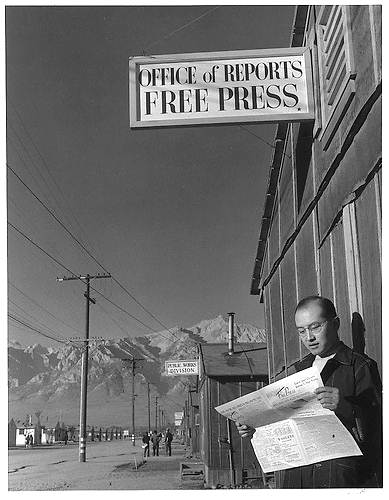 by Mark Allen
by Mark Allen
As a local government press officer I am in the privileged position to interact with and read a wide range of social media, traditional media and new media sources on a daily basis.
Social and new media has enriched our knowledge of what people think and how they come to conclusions and is a very good thing on the whole.
I've have blogged since 2003, Tweet and use Facebook and Linked In and so am hardly a Luddite.
At a recent conference I was struck by how many people – mostly local bloggers – seemed to write off the newspaper and local radio industries.
This surprised me and is something I believe is done at our cost.
44% of households still buy a daily newspaper.
Of the 2.940 articles from releases and enquiries mentioning Halton Borough Council in the past year 57% appeared in local papers and more if you count their websites.
Out of more than 833 enquires more than 72% came from the local press – and the resulting stories appeared in the papers or their websites.
Look through the news threads on Twitter – see how many link to stories originating from newspapers. I have yet to have one media enquiry from a blogger – although I would welcome them.
The main weekly paper in Widnes and Runcorn - The Weekly News - has seen a circulation increase of 3% in the last year - after several increases in a row.
According to the Audit Bureau of Circulation, the newspaper circulation body, 40% of print readership is under 34-years-old and the 15 to 24-year-old PREFERING the print version to the online copy.
The number of daily visitors to regional news websites increased by more than 25% in the first half of the year, according to ABC.
Trinity Mirror which owns our local Runcorn and Widnes network of websites saw the biggest increase in traffic – daily visitors were up 53.6% to 468,426 and monthly visitors were up 54.7% to 9m year-on-year.
Newsquest saw the number of monthly users rise by 31.7% to 8.5m and Northcliffe was up 29% to 5.2m
Express & Star owners the Midland News Association saw a year-on-year increase in monthly users of 40.9% to 976,980 – with daily visitors up 35.8% to 54,859.
Most people I know still rely on the newspaper or a website with stuff used in it for their primary source of news, especially in traditional working class places like Halton - or those with an ageing population.
In our eagerness to embrace new media sources we shouldn't lose sight of the value of traditional ones - particularly in traditional working class areas like Halton where a lot of people still buy local and regional papers. The Liverpool Echo and The Liverpool Post still do well and free weekly The World is still popular.
And as a small snapshot everyone in a friend’s office (who is not connected with the press) 75% either have a national paper or look at one online – even if it is The Daily Mail…
Of course lets not forget The Stephen Lawrence case would not have been re-opened without The Mail.
In the mad anti-journo crush of THAT enquiry it must be remembered that the newspaper industry is likely to be more truthful and find more ground breaking stories than Facebook or Twitter - that is often a libellous free-for-all.
The 10 London-based national titles sell an average of 9,540,993 a day. This is a HUGE amount...
The 68 English regional dailies (mornings and evenings) together sell 2,085,116. The nine Scottish dailies sell 735,002; the six Welsh sell 183,131; and the three Northern Ireland titles sell 137,230.
UK has a population of around 61 million. Since the average number of people living in a household is 2.36, the number of households is therefore approximately 26 million
Ergo 44% of households buy a daily paper.
We may read papers a different way through iPads, laptops and phones - but they will be with us for some time to come - and their spirit will outlive them.
STATS: 7% of paid-for weekly newspapers increased their circulation in the first six months of 2011 while 14% saw a double-digit drop in circulation, figures from the Audit Bureau of Circulation show.
The best performing title was the Wanstead & Woodford Guardian which saw a 27.1% boost in circulation to 4,354. This was followed by the Bracknell News, up 13.7% to 3,683, and the Lowestoft Journal, which rose 6.5% to 16,606.
While 24 paid-for weeklies increased their circulation in the first half of the year, 45 titles saw a double-digit drop in sales. So half as many showed an increase than a double digit fall... hardly the disaster forecast!
Mark Allen is a former journalist and is a press officer for Halton Borough Council in Cheshire.